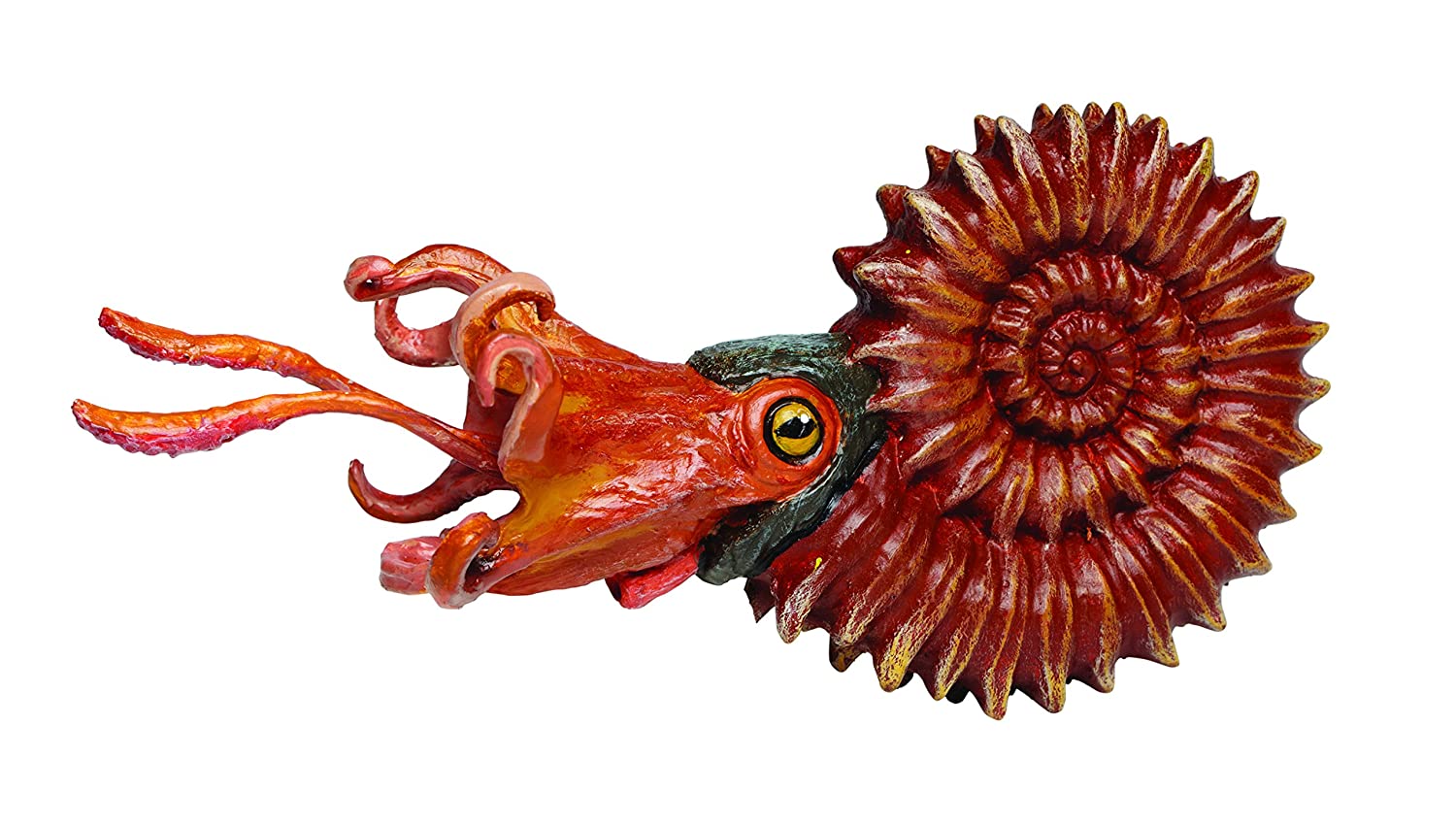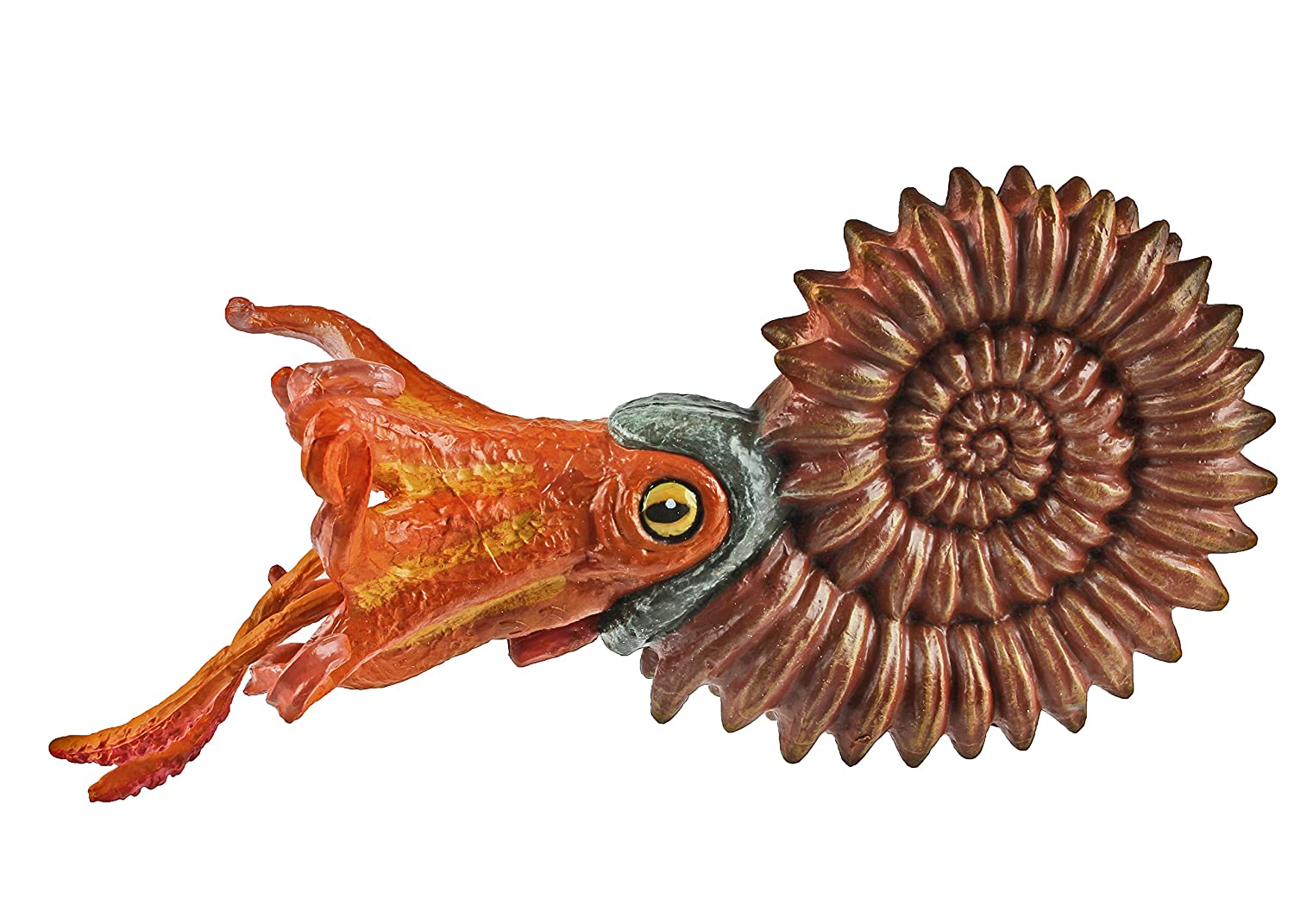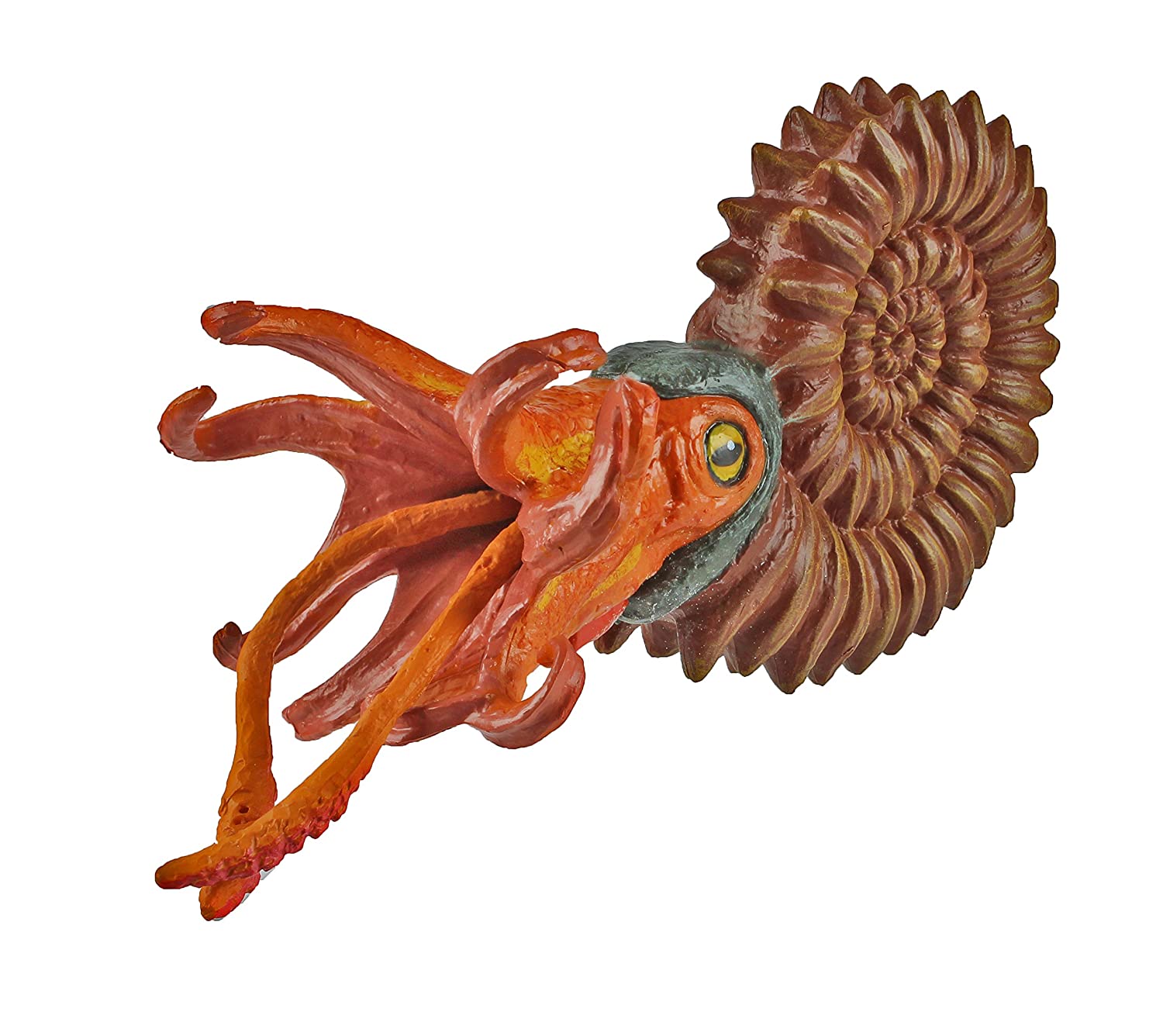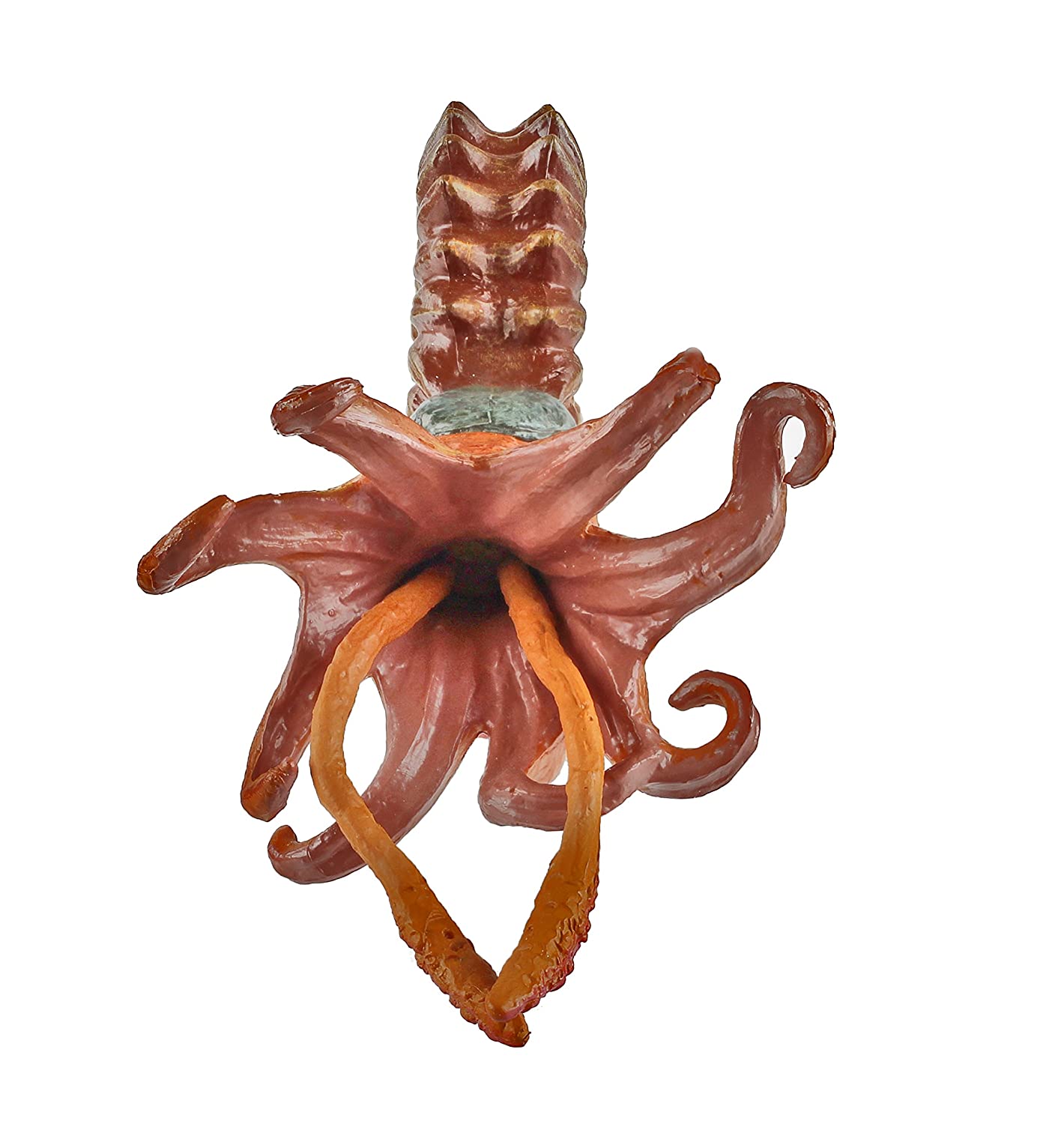Ammonites were a group of marine molluscs related to modern octopus, squids and cuttlefish that first appeared in the Devonian Period (about 400 million years ago) and went extinct 66 million years ago at the end of the Cretaceous Period. Unlike octopus and squids and cuttlefish, ammonites have a large external shell that makes them look a bit like huge snails. All ammonites have a large external shell. Most shells are coiled, but some species have a more complicated helical shape, while others have simple, straight shells. The shells are divided into many chambers, and the divisions to these chambers form complicated patterns on the outside of the shell. The sort parts of ammonites are rarely preserved, but like living octopus, squid and cuttlefish, they had a large head that projected out of the opening in the shell. The head would have had a large brain and well developed eyes, and at least 8 tentacles. This model is 5.25 inches long and 2.5 inches high. It is coloured in inconspicuous brown and grey like modern octopus and squids. The shells of ammonites sometimes preserves a shiny, ‘mother-of-pearl’ layer (called ‘ammolite’) that can be used to make attractive jewellery.
Not appropriate for children under the age of 3
Ammonite
$29.99
- Ammonites were a group of marine molluscs related to modern octopus, squids and cuttlefish that first appeared in the Devonian Period (about 400 million years ago)
- Unlike octopus and squids and cuttlefish, ammonites have a large external shell that makes them look a bit like huge snails
- Most shells are coiled, but some species have a more complicated helical shape, while others have simple, straight shells
- The head would have had a large brain and well developed eyes, and at least 8 tentacles
- Non-toxic and BPA free
In stock
Additional information
| Weight | 0.082 kg |
|---|---|
| ean | 0095866303402 |
| brand | Safari |
| dimensions | 13.3 x 6.5 x 6 cm ; 9.07 g |




